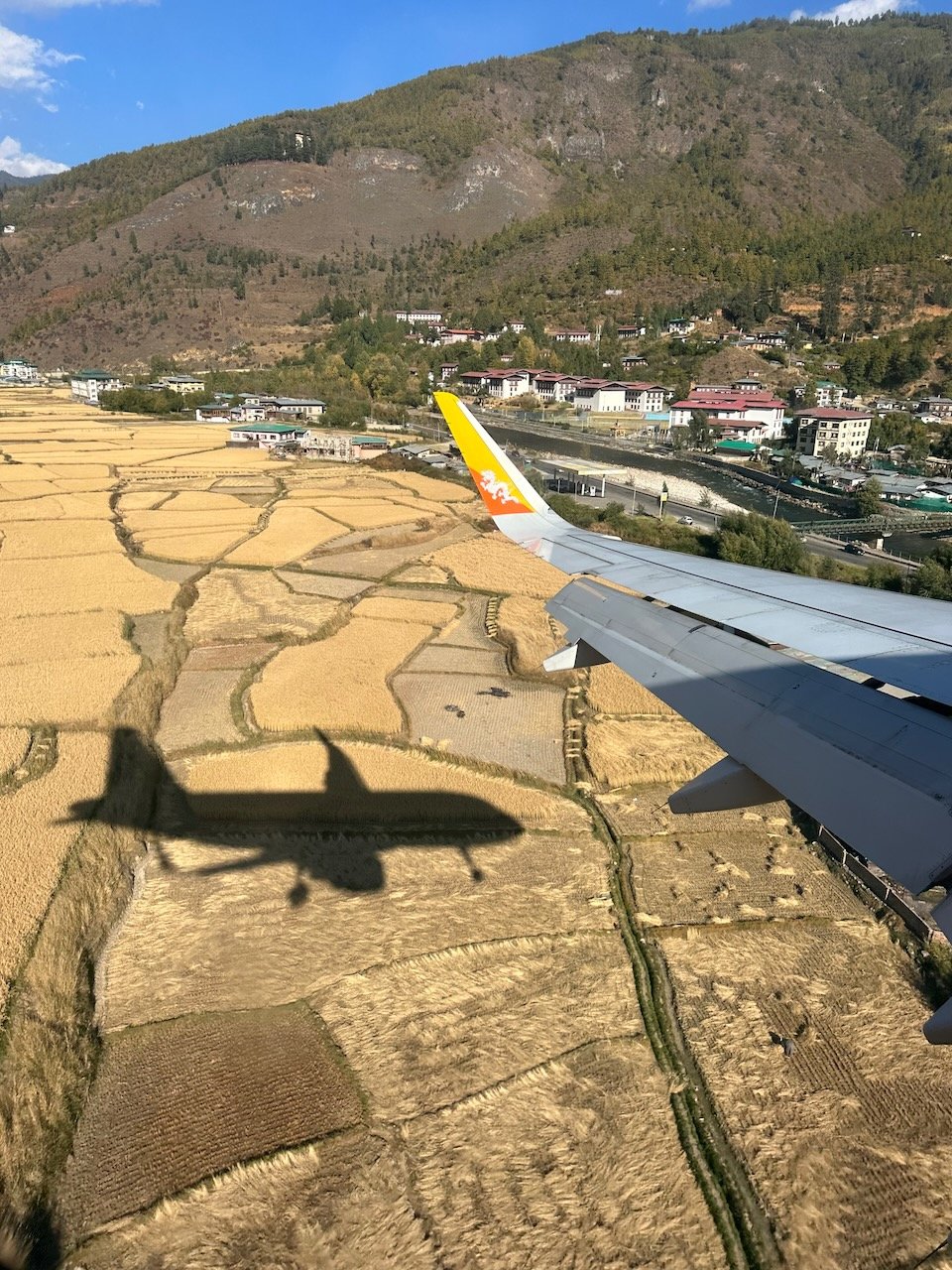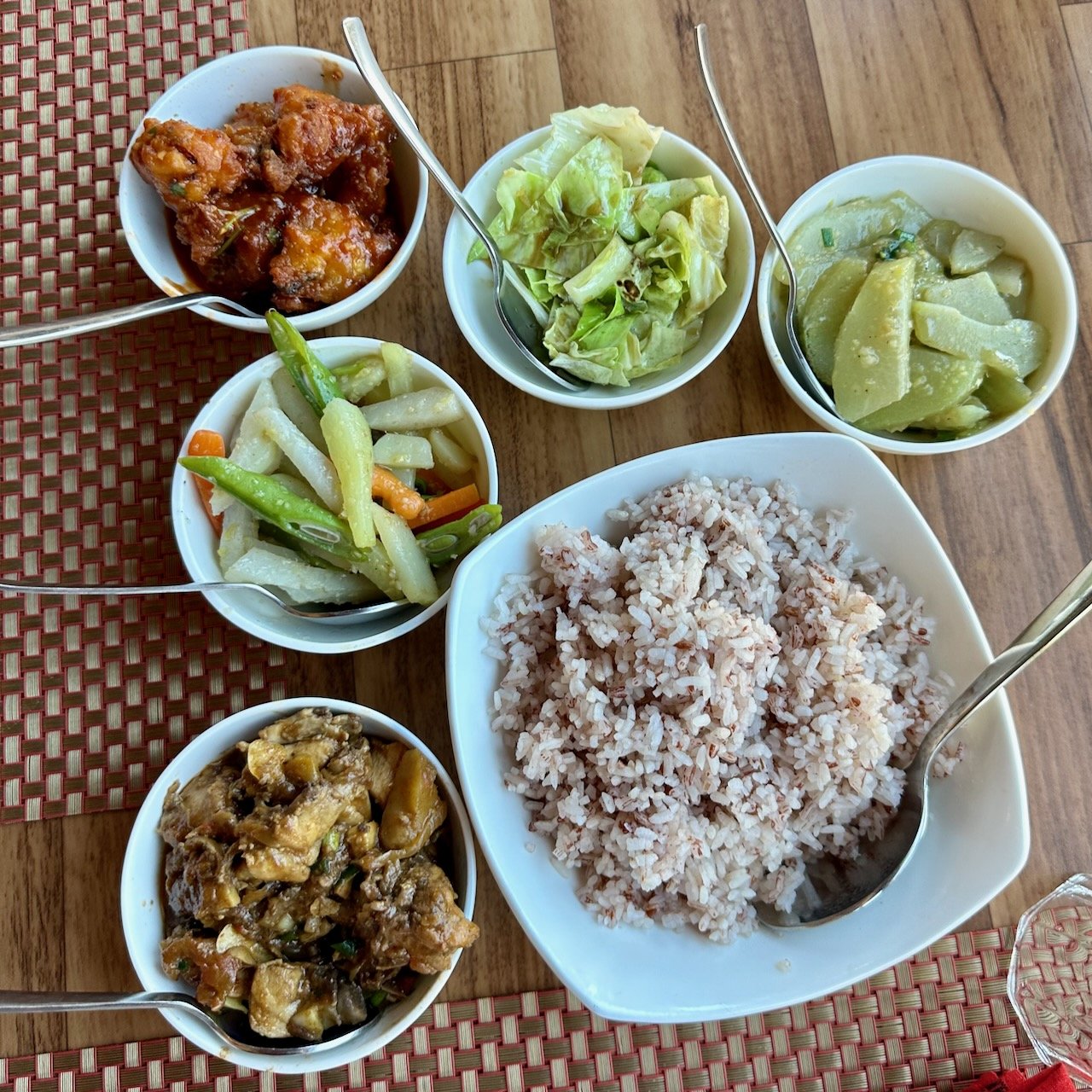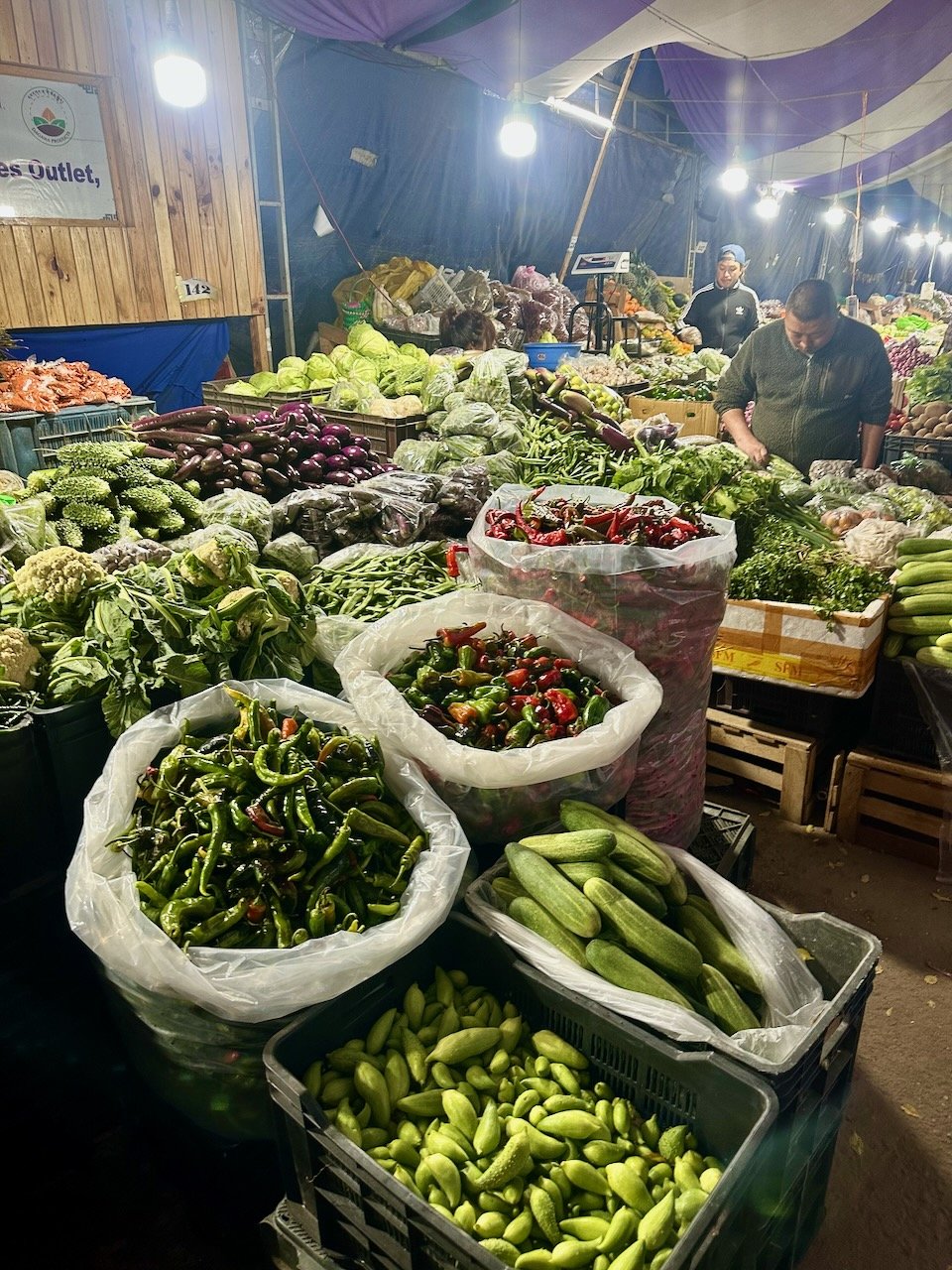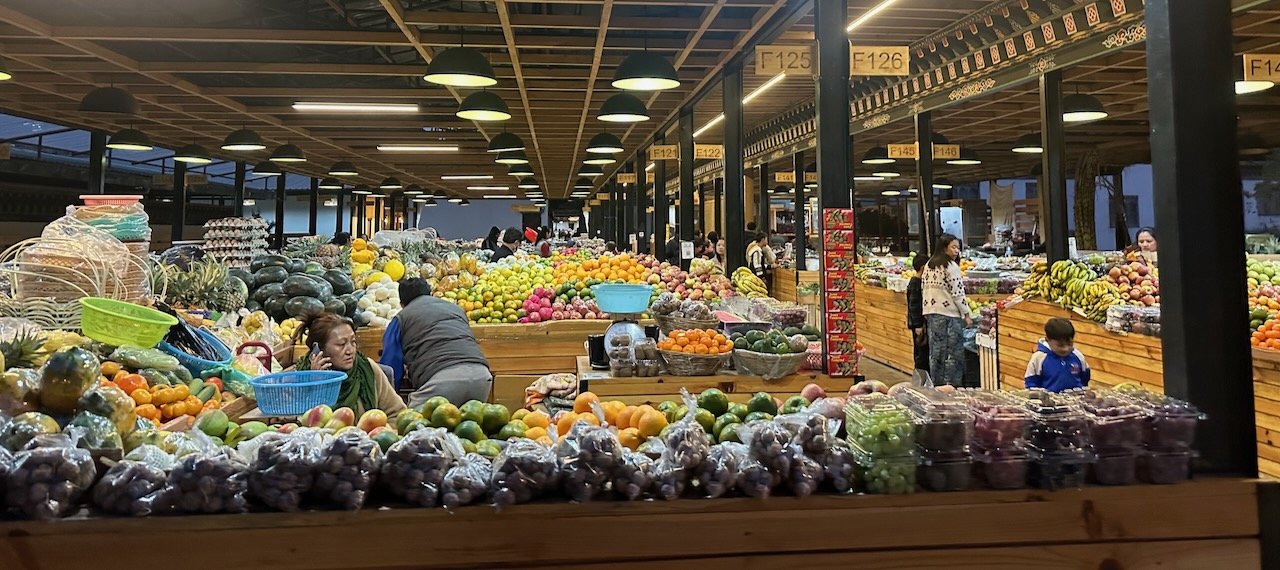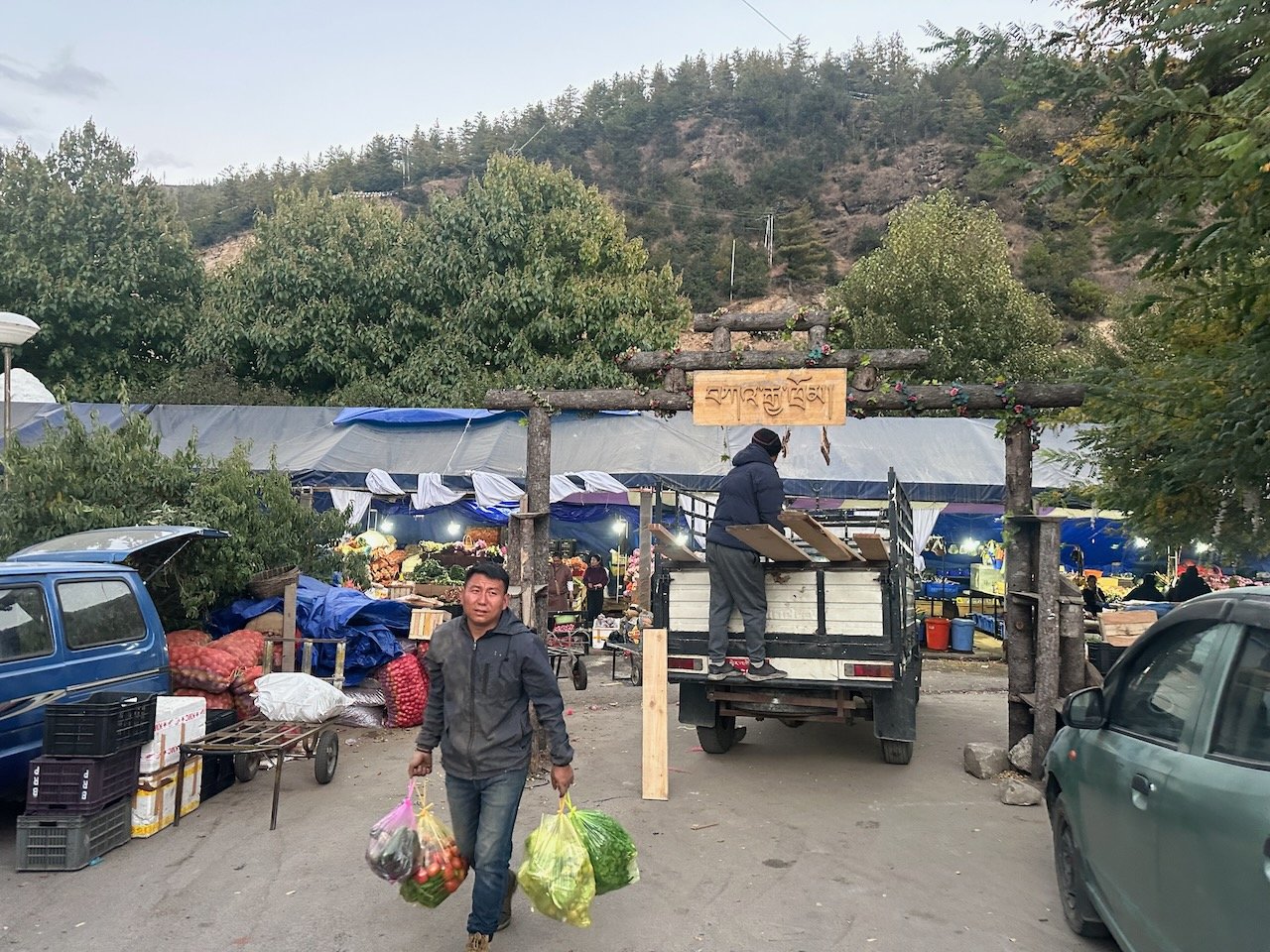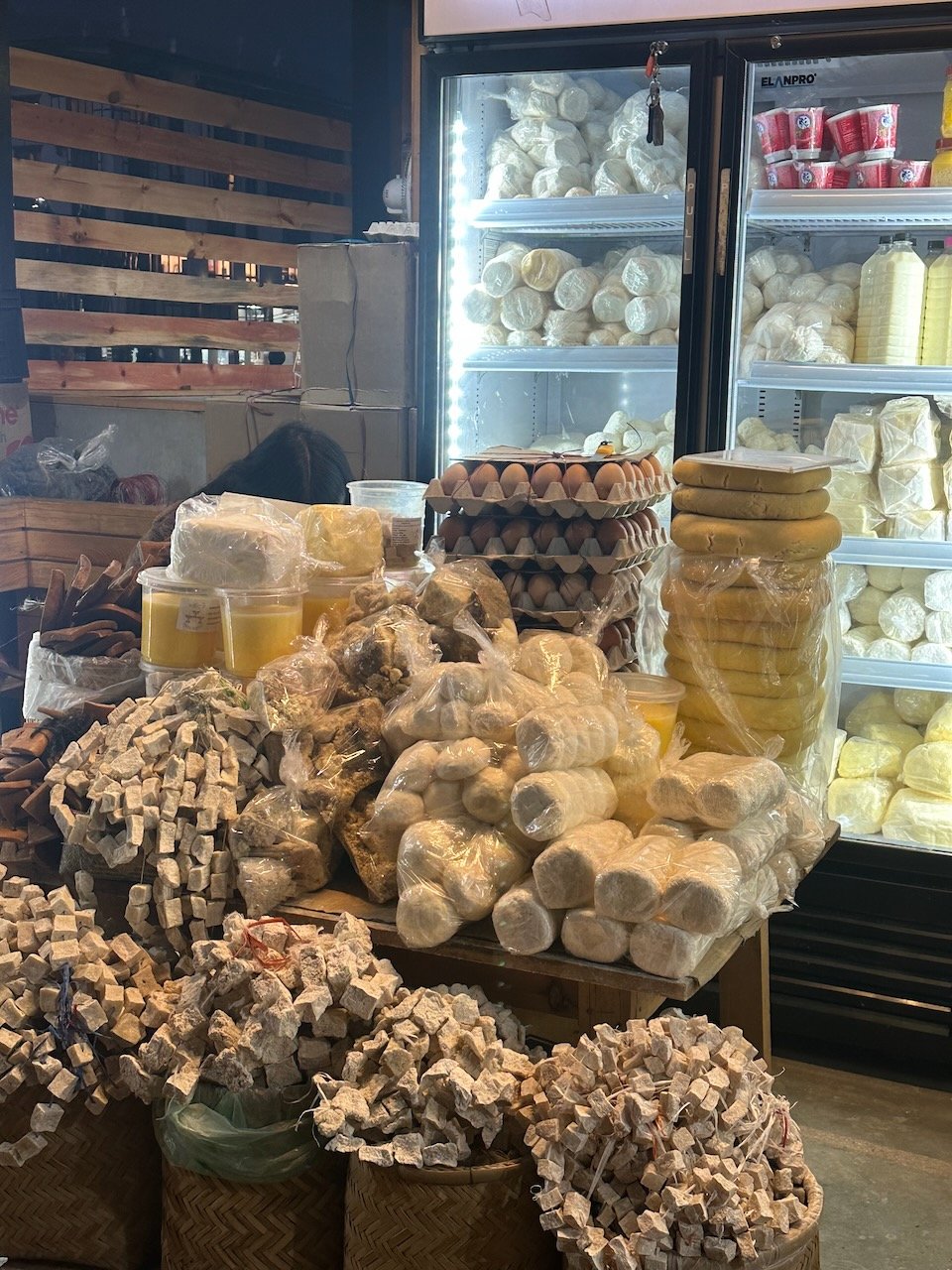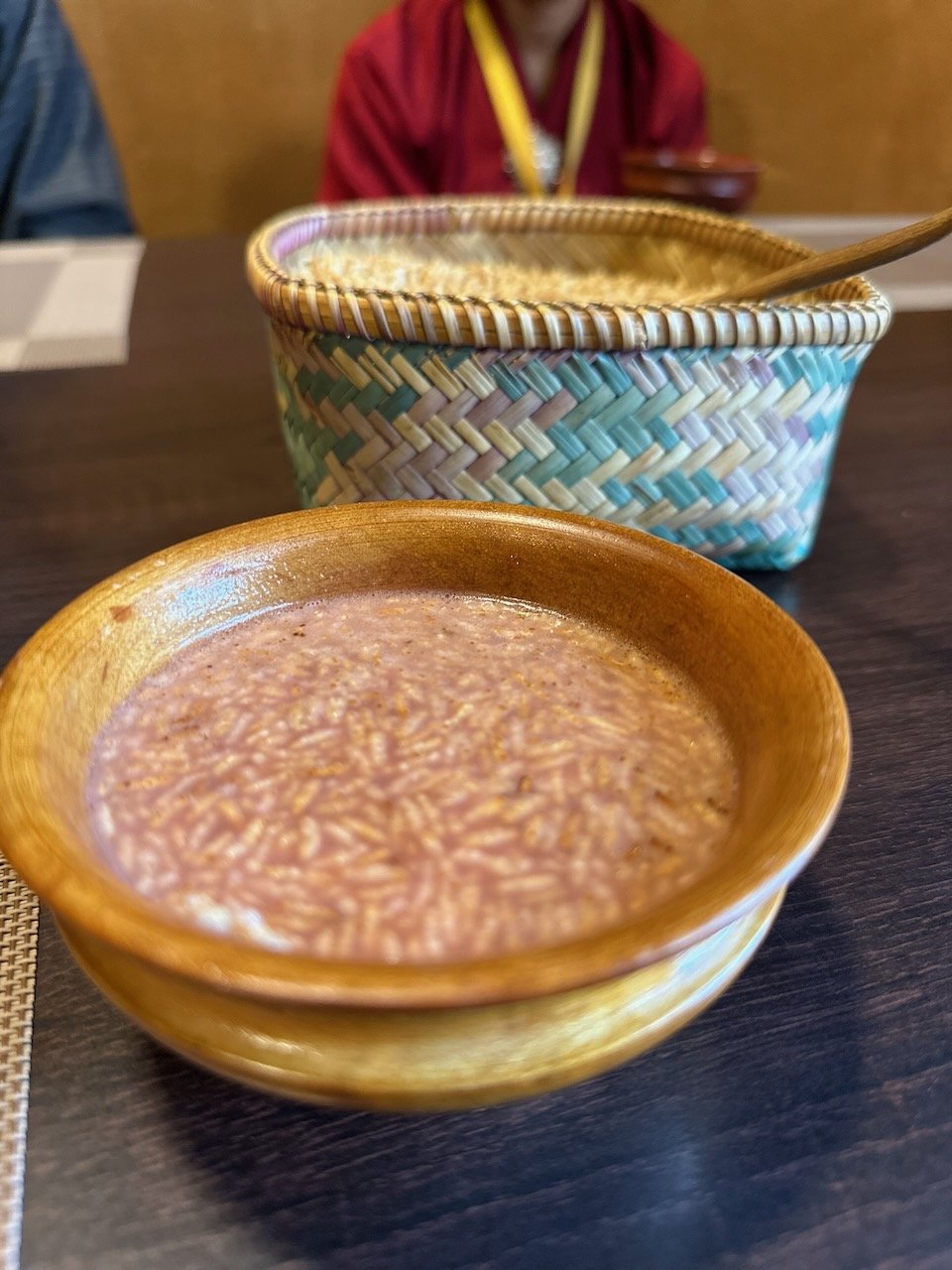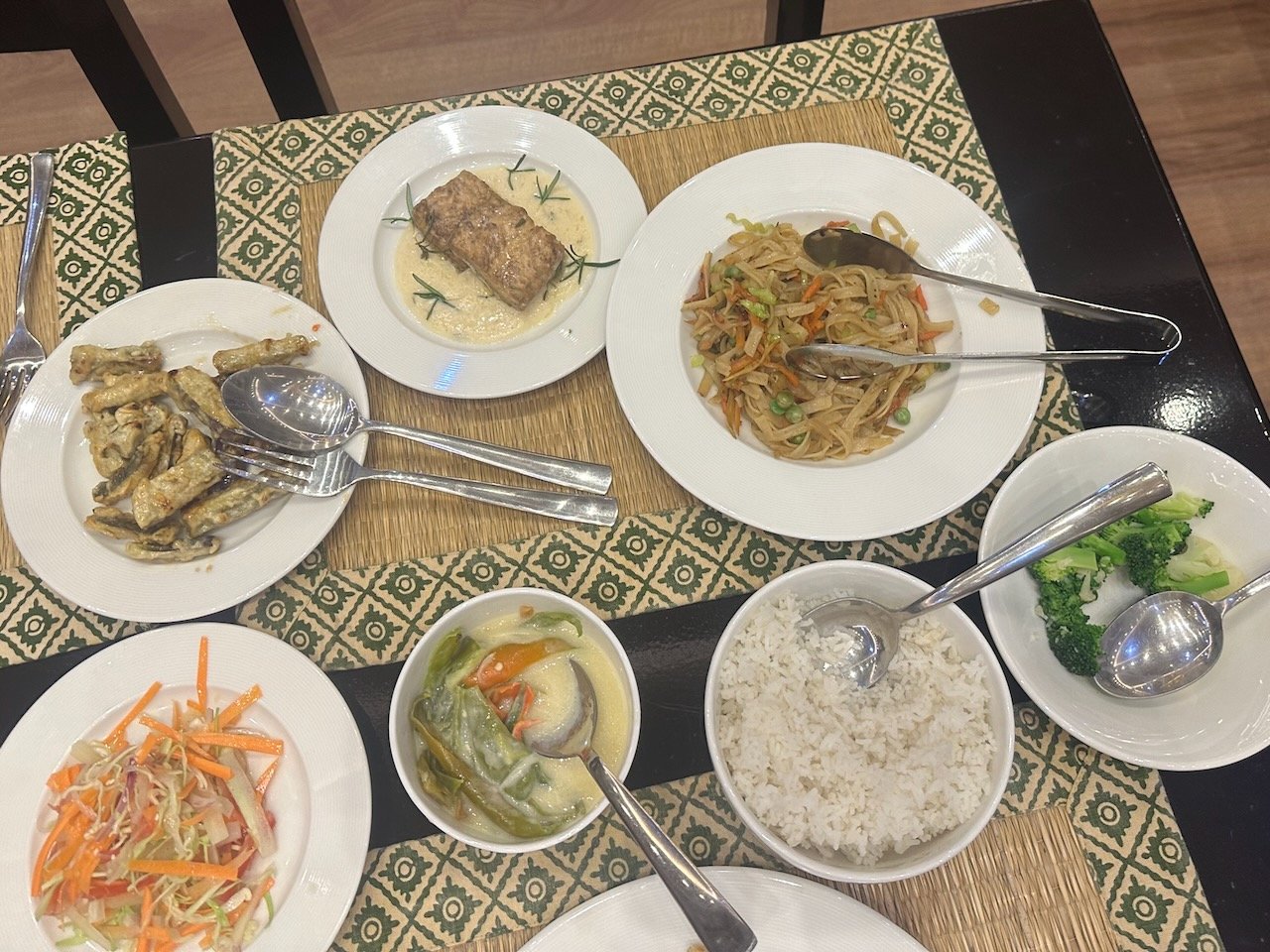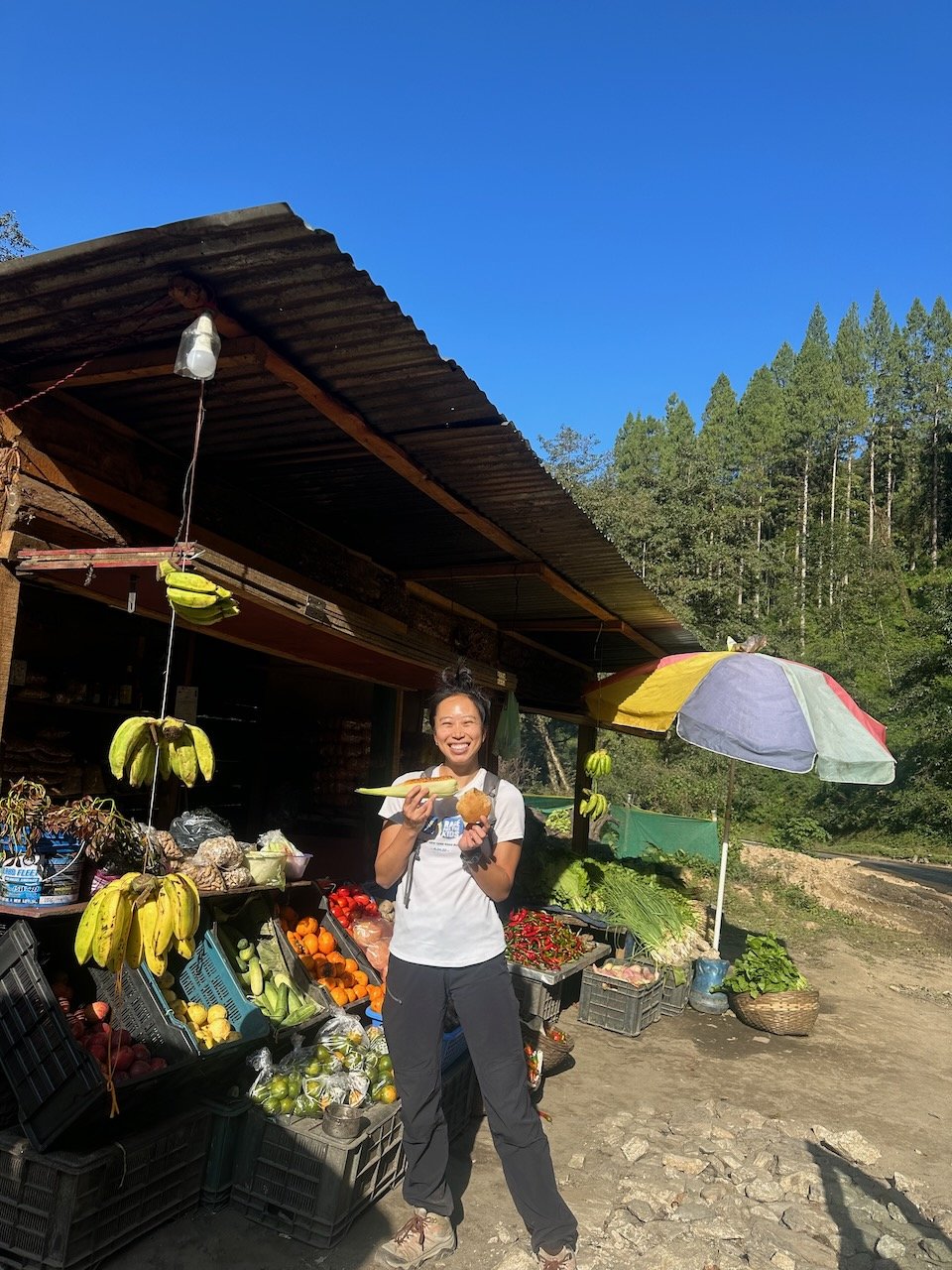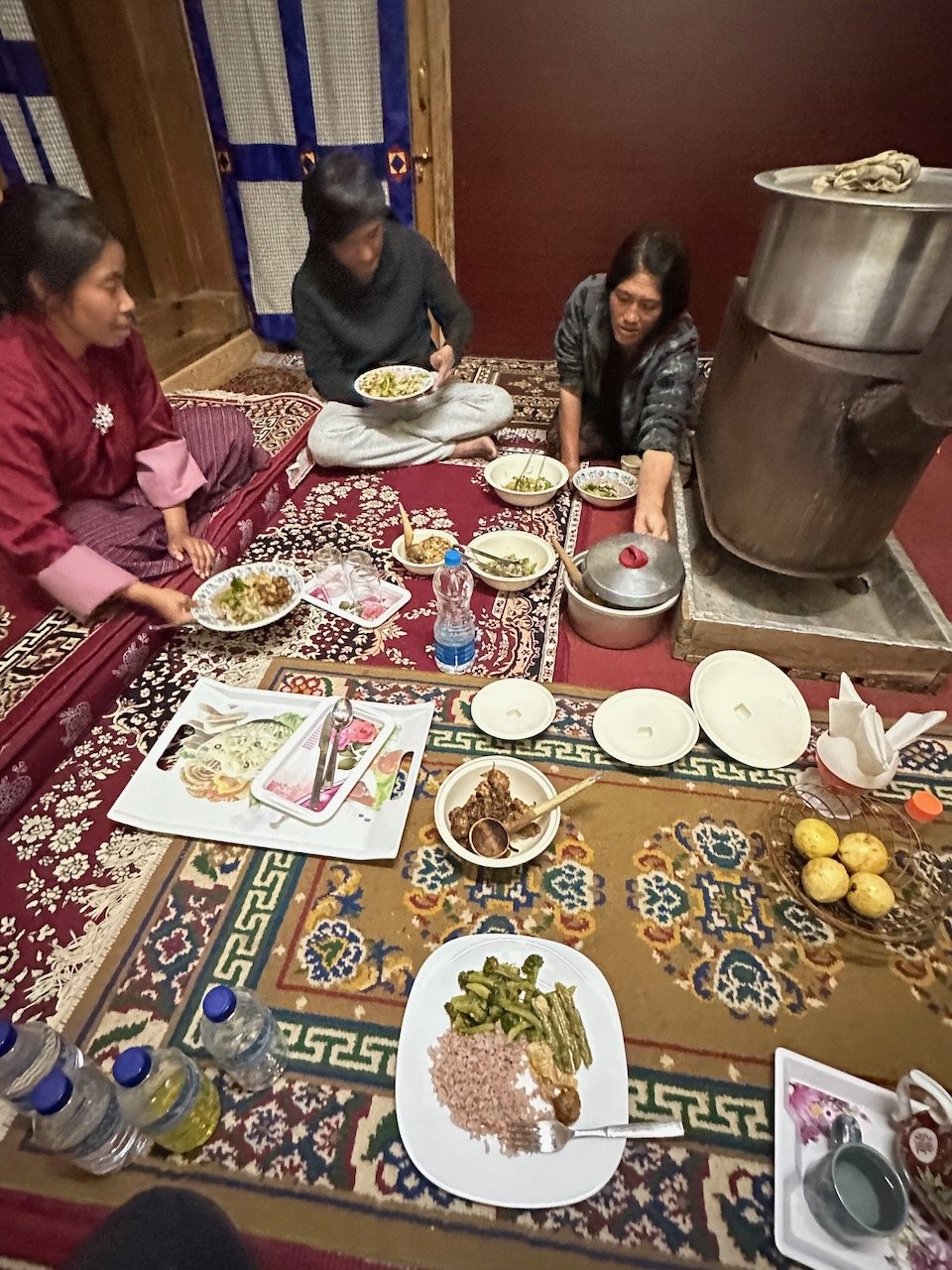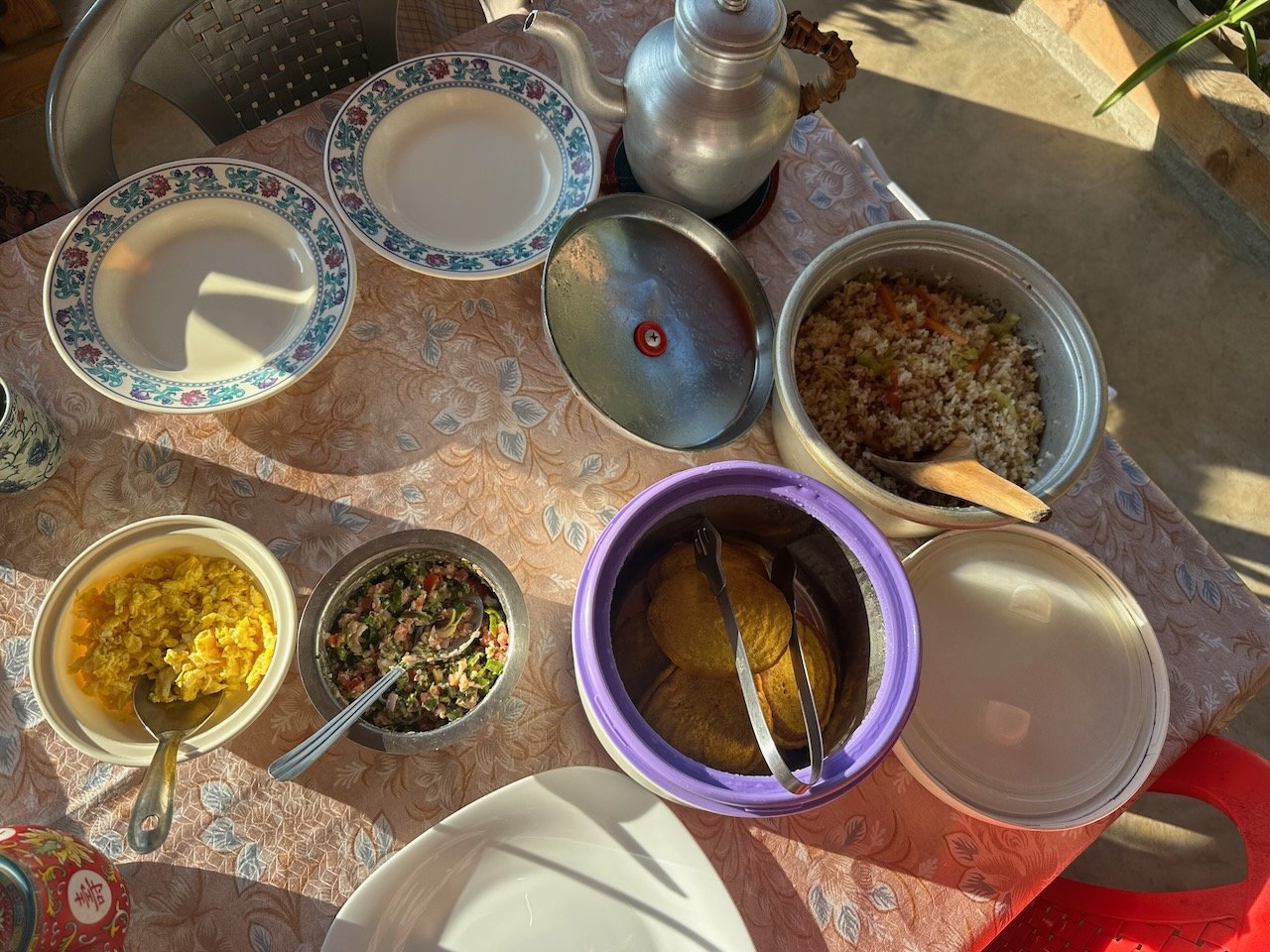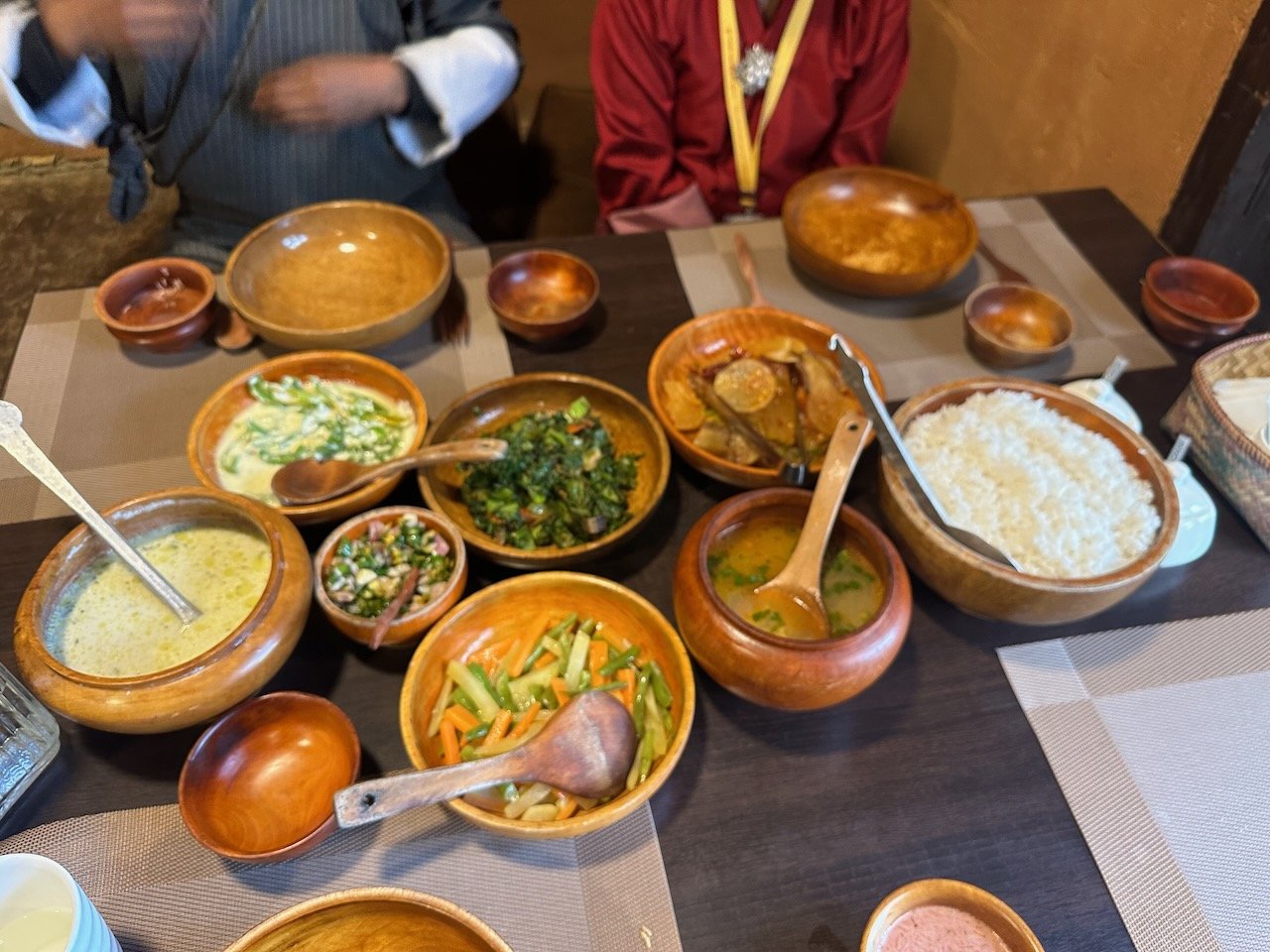
Bhutanese Food
Bhutan
POSTCARDS | NOV 17One of my first stops on my tour in Bhutan was visiting a farmer’s market, and I was overjoyed to see the abundance of fresh and colorful produce. Vegetables feature heavily in the Bhutanese diet which was quite exciting to me coming from Nepal. Interestingly enough, many Bhutanese are vegetarian because it is illegal to hunt or kill animals in Bhutan due to the country’s Buddhist beliefs of not harming any living being. Those who want to eat meat must buy meat imported from other countries, primarily India.
I was quite looking forward to eating Bhutanese food because I had read that it was spicy, but I was a bit disappointed by the food provided on the tour because it was catered towards tourists - soft on the spices and a bit bland. However I did have the opportunity to try Bhutanese dishes such as their famous chili cheese curry - they were just toned down by a couple of notches!
Flying over rice fields on the way to Paro International Airport
Rice is the staple of Bhutan. Red rice is a popular variety frequently eaten in Bhutan.
Lunch featured red rice with sides of chicken and multiple vegetable dishes. I minimized the amount of meat I ate in Bhutan because all of their meat is imported, mainly from India; it is forbidden to hunt, fish, or kill animals in Bhutan.
Fresh produce is a dream, especially coming from Nepal where vegetables weren't necessarily the focal point of the meal.
I was in love with the farmer's market because of the plethora of vegetables featured in the stalls.
Entrance to the Thimphu Farmer's Market.
Cheese is surprisingly popular in Bhutan. They sell strings of hardened cheese for people to chew on
More hardened cheese cubes and soft cheese. To chew the cheese cubes, you must soften it in your mouth first before chewing.
Butter tea filled with rice crisps. It was very buttery and absolutely not my cup of tea.
Meals at the hotels were often watered down from the typical Bhutanese spice levels and featured more "Western-friendly" dishes to cater to tourists. Personally I was disappointed by the hotel food.
A vegetable and produce stand by the side of the highway. Most of the roadside stalls are women-owned businesses; the government sets asides loans specifically for women who want to open their own roadside business.
Happily eating roasted corn topped with butter and spices at a roadside stall.
Dinner at Aum Leki Wangmo Homestay
Aum Leki, who runs the homestay, cooks entirely from her garden and farm - everything is organic!
My favorite breakfast was at the homestay. It included buckwheat pancakes, scrambled eggs, chilis, and fried rice using leftovers from dinner.
Chili and cheese is the national dish of Bhutan. It's essentially a vegetable curry, where vegetable = chili and curry = cheese. Not the most lactose-friendly so I presume that Bhutanese are not as lactose intolerant as East Asians. There are several variations of this dish, including mushroom and cheese.
Pumpkin soup was a frequent appetizer at the hotel restaurants, but it was more of a thin soup rather than thin hearty bisque that features in American cuisine.
The main difference between Bhutanese momos (dumplings) and Nepalese momos is that Bhutan restaurants typically only include 5 momos, whereas Nepalese restaurants serve 8-10!

